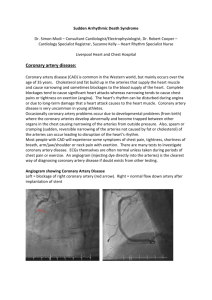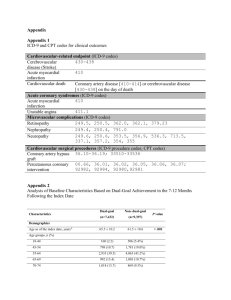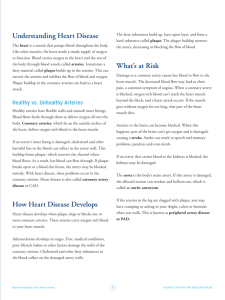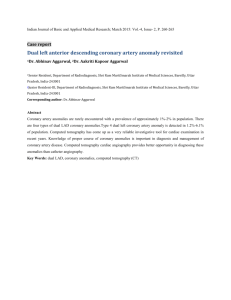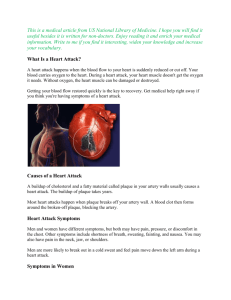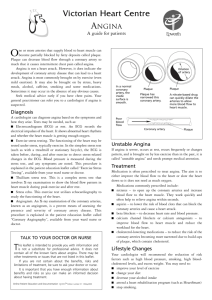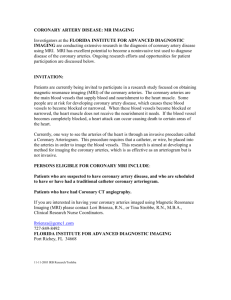Coronary Artery Disease
advertisement
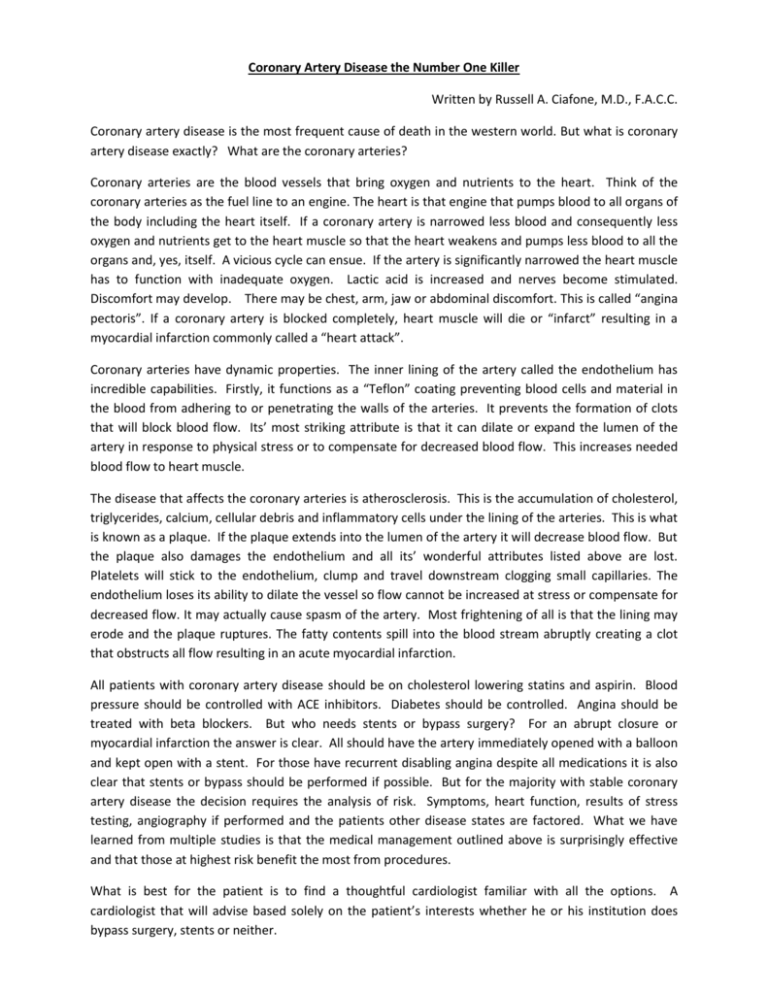
Coronary Artery Disease the Number One Killer Written by Russell A. Ciafone, M.D., F.A.C.C. Coronary artery disease is the most frequent cause of death in the western world. But what is coronary artery disease exactly? What are the coronary arteries? Coronary arteries are the blood vessels that bring oxygen and nutrients to the heart. Think of the coronary arteries as the fuel line to an engine. The heart is that engine that pumps blood to all organs of the body including the heart itself. If a coronary artery is narrowed less blood and consequently less oxygen and nutrients get to the heart muscle so that the heart weakens and pumps less blood to all the organs and, yes, itself. A vicious cycle can ensue. If the artery is significantly narrowed the heart muscle has to function with inadequate oxygen. Lactic acid is increased and nerves become stimulated. Discomfort may develop. There may be chest, arm, jaw or abdominal discomfort. This is called “angina pectoris”. If a coronary artery is blocked completely, heart muscle will die or “infarct” resulting in a myocardial infarction commonly called a “heart attack”. Coronary arteries have dynamic properties. The inner lining of the artery called the endothelium has incredible capabilities. Firstly, it functions as a “Teflon” coating preventing blood cells and material in the blood from adhering to or penetrating the walls of the arteries. It prevents the formation of clots that will block blood flow. Its’ most striking attribute is that it can dilate or expand the lumen of the artery in response to physical stress or to compensate for decreased blood flow. This increases needed blood flow to heart muscle. The disease that affects the coronary arteries is atherosclerosis. This is the accumulation of cholesterol, triglycerides, calcium, cellular debris and inflammatory cells under the lining of the arteries. This is what is known as a plaque. If the plaque extends into the lumen of the artery it will decrease blood flow. But the plaque also damages the endothelium and all its’ wonderful attributes listed above are lost. Platelets will stick to the endothelium, clump and travel downstream clogging small capillaries. The endothelium loses its ability to dilate the vessel so flow cannot be increased at stress or compensate for decreased flow. It may actually cause spasm of the artery. Most frightening of all is that the lining may erode and the plaque ruptures. The fatty contents spill into the blood stream abruptly creating a clot that obstructs all flow resulting in an acute myocardial infarction. All patients with coronary artery disease should be on cholesterol lowering statins and aspirin. Blood pressure should be controlled with ACE inhibitors. Diabetes should be controlled. Angina should be treated with beta blockers. But who needs stents or bypass surgery? For an abrupt closure or myocardial infarction the answer is clear. All should have the artery immediately opened with a balloon and kept open with a stent. For those have recurrent disabling angina despite all medications it is also clear that stents or bypass should be performed if possible. But for the majority with stable coronary artery disease the decision requires the analysis of risk. Symptoms, heart function, results of stress testing, angiography if performed and the patients other disease states are factored. What we have learned from multiple studies is that the medical management outlined above is surprisingly effective and that those at highest risk benefit the most from procedures. What is best for the patient is to find a thoughtful cardiologist familiar with all the options. A cardiologist that will advise based solely on the patient’s interests whether he or his institution does bypass surgery, stents or neither.

